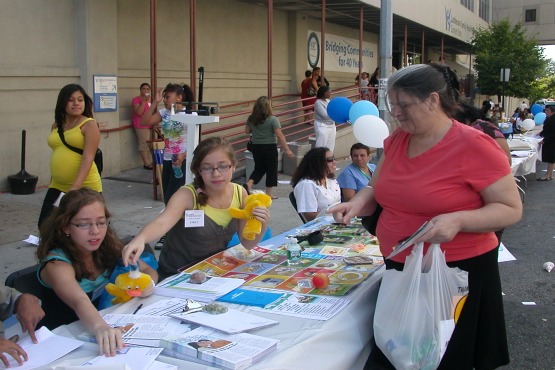Community obesity rates help shape whether families are overweight

NEW YORK (Reuters ) - Parents and kids who live in communities with high obesity rates are more likely to become overweight themselves than families living in communities where more people are a healthy weight, a US study suggests.
Researchers focused on 1,519 military families who were assigned to live at one of 38 Army installations across the US The study team examined county-level data on obesity rates at each location and also assessed body mass index (BMI), a measure of weight relative to height, for one parent and child in each family.
On average, 30 percent of people in each county were obese, though this ranged from a low of 21 percent in El Paso County, Colorado, to high of 38 percent in Vernon County, Louisiana.
Each 1-percentage-point increase in county obesity rates was associated with 5 percent higher odds that parents would be obese and a 4 percent greater likelihood that children would be overweight or obese, the study found.
“Where you live can influence your family’s health in important ways,” said study co-author Ashlesha Datar of the Center for Economic and Social Research at the University of Southern California in Los Angeles.
“It’s not just the built environment, i.e. availability of parks and healthy food outlets, that is important, but that social norms about obesity can also influence your family’s risk,” Datar said by email. “Therefore, finding ways to be active and eat healthy and creating a culture of health in your community is important.”
Researchers studied military families because service members are routinely assigned to installations based on the needs of the military, making it less likely that other factors that might influence obesity also prompted families to choose to live in a particular community, researchers note in JAMA Pediatrics.
Overall, 75 percent of the parents in the study were overweight or obese. The proportion of kids who were overweight or obese ranged from 25 percent to 28 percent, depending on whether height and weight information came from parent reports or was independently measured.
Kids were more likely to be overweight or obese, and parents were more likely to be obese, when families did not live on the military bases and instead found housing in the surrounding community, the study also found.
The study wasn’t a controlled experiment designed to prove whether or how community obesity rates might be “socially contagious,” directly impacting the risk of obesity for parents and children.
One drawback of using BMI to detect obesity in adults is that it doesn’t account for how much lean muscle mass people may have; therefore, obesity rates might not have been as high as they appeared, particularly among the adults.
Another limitation is that results from military families might not reflect what would happen among other families, the authors note.
Even so, the quasi-experimental study based on military families assigned to live in different places offers some of the strongest evidence to date that communities and social interactions can shape how much people weigh, said Leonard Epstein of the Jacobs School of Medicine and Biomedical Sciences at the University at Buffalo in New York.
Even when lots of friends, neighbors or co-workers are obese, parents can still do a lot to minimize the risk of obesity within their own family, Epstein, co-author of an accompanying editorial, said by email.
“Model healthy behaviors, which may involve changing parent behaviors,” Epstein advised. “Arrange a home environment that fosters healthy eating and having an active lifestyle, develop a network of families who have healthy habits, and encourage play dates and friendships with children and families who can encourage your children to adopt a healthy lifestyle.”







